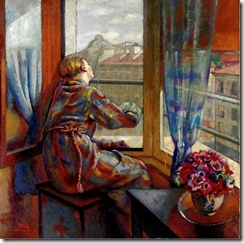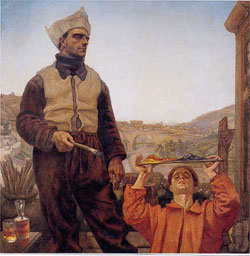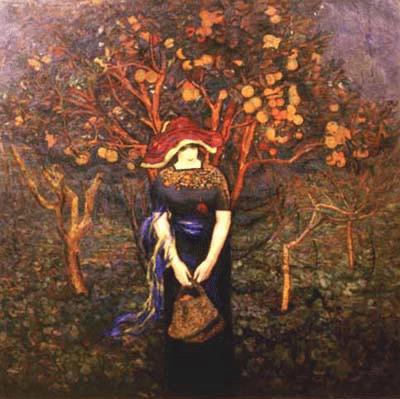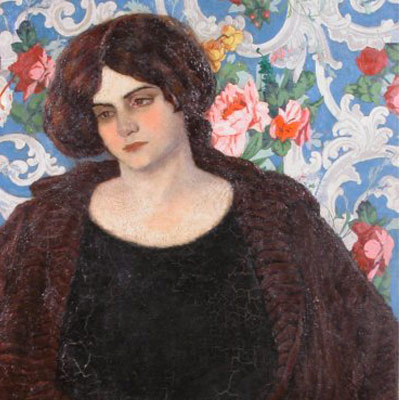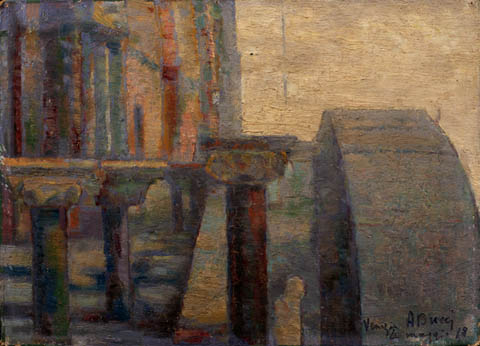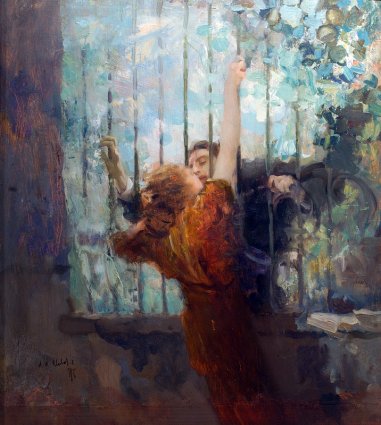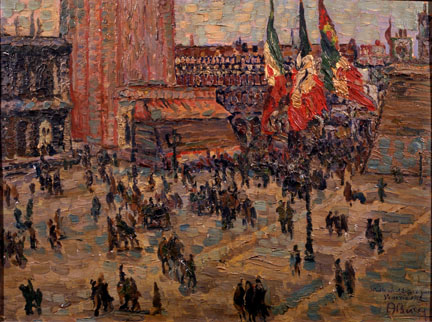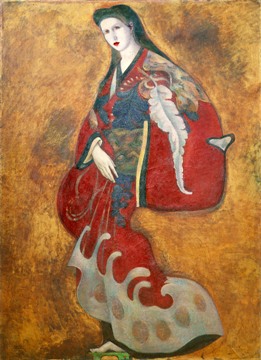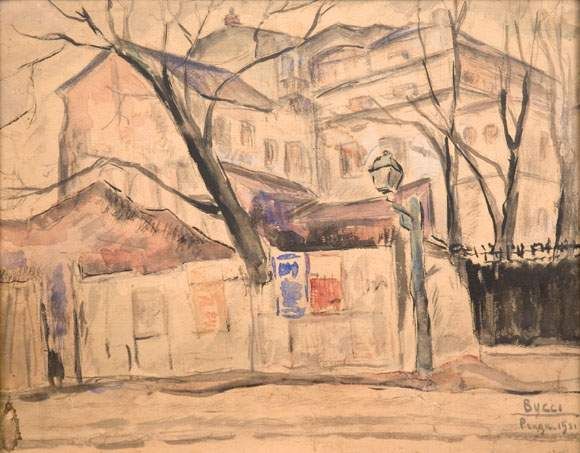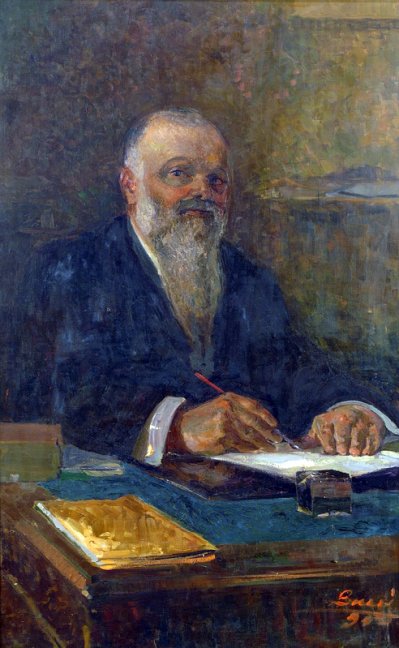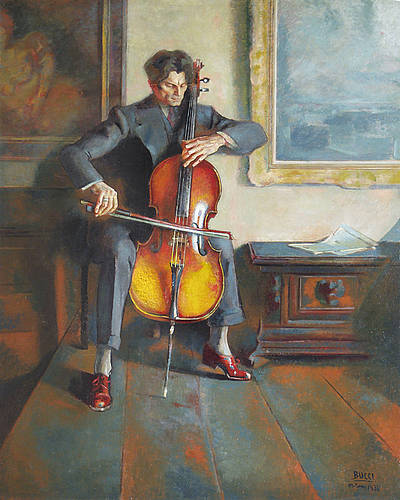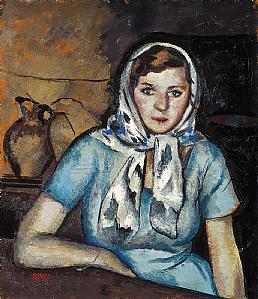<Back to Index>
- Painter Giacomo Balla, 1871
- Painter Anselmo Bucci, 1887
PAGE SPONSOR
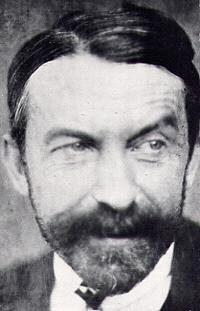
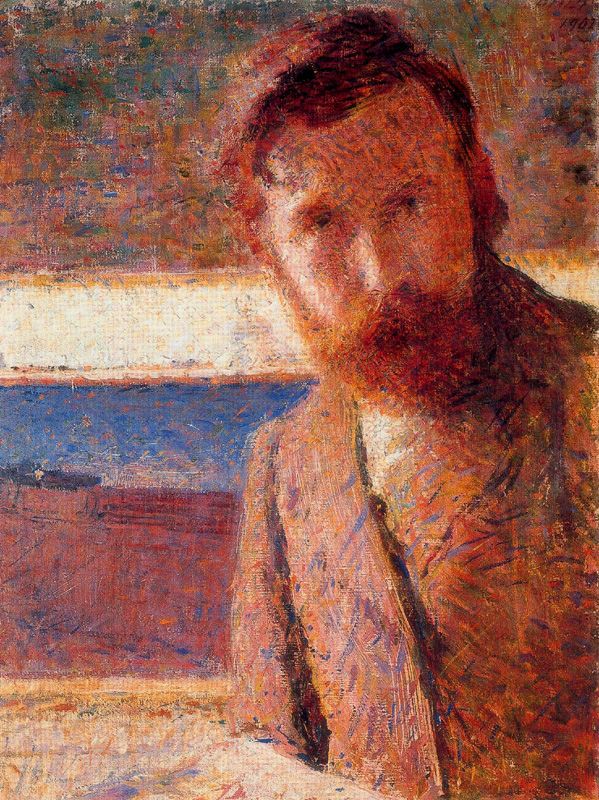
Giacomo Balla (July 18, 1871, Turin, Piedmont – March 1, 1958) was an Italian painter.
Born in Turin, in the Piedmont region of Italy, the son of an industrial chemist, as a child Giacomo Balla studied music.
At 9, when his father died, he gave up music and began working in a lithograph print shop. By age twenty his interest in art was such that he decided to study painting at local academies and exhibited several of his early works. Following academic studies at the University of Turin, Balla moved to Rome in 1895 where he met and married Elisa Marcucci. For several years he worked in Rome as an illustrator and caricaturist as well as doing portraiture. In 1899 his work was shown at the Venice Biennale and in the ensuing years his art was on display at major Italian exhibitions in Rome and Venice, in Munich, Berlin and Düsseldorf in Germany as well as at the Salon d'Automne in Paris and at galleries in Rotterdam in the Netherlands.
Influenced by Filippo Tommaso Marinetti, Giacomo Balla adopted the Futurism style, creating a pictorial depiction of light, movement and speed. He was signatory to the Futurist Manifesto in 1910 and began designing and painting Futurist furniture and also created Futurist "antineutral" clothing. He also taught Umberto Boccioni. In painting, his new style is demonstrated in the 1912 work titled Dynamism of a Dog on a Leash. The style is also demonstrated in his 1914 work titled Abstract Speed + Sound (Velocità astratta + rumore). In 1914, he also began sculpting and the following year created perhaps his best known sculpture called Boccioni's Fist.
During World War I
Balla's studio became the meeting place for young artists but by the
end of the war the Futurist movement was showing signs of decline. In
1935 he was made a member of Rome's Accademia di San Luca. Balla
participated in the documenta 1 1955 in Kassel, Germany. His work was also shown postmortem during the documenta 8 in 1987.
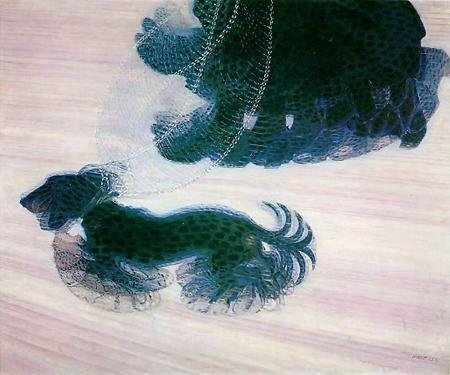
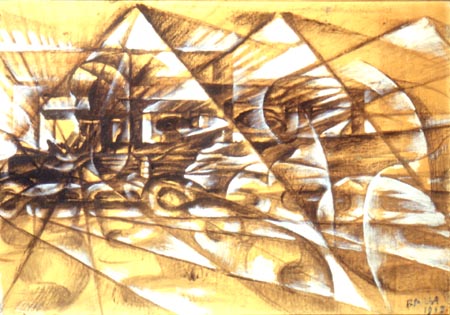
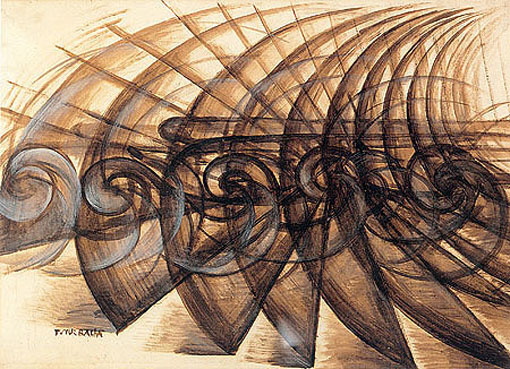
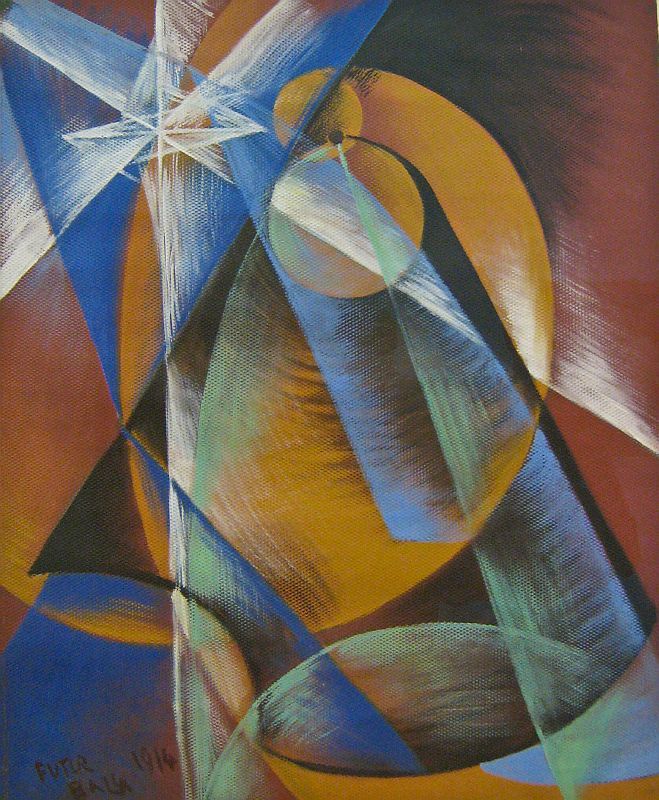
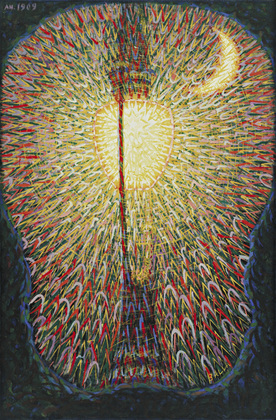
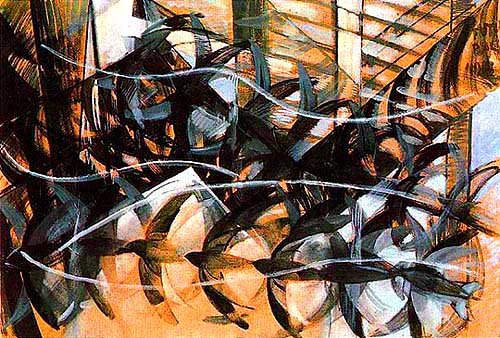
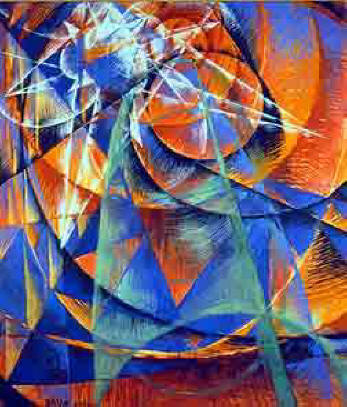
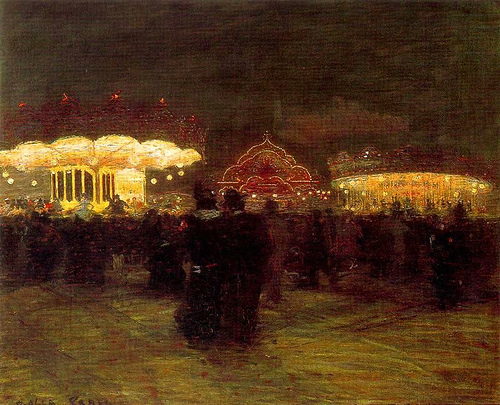
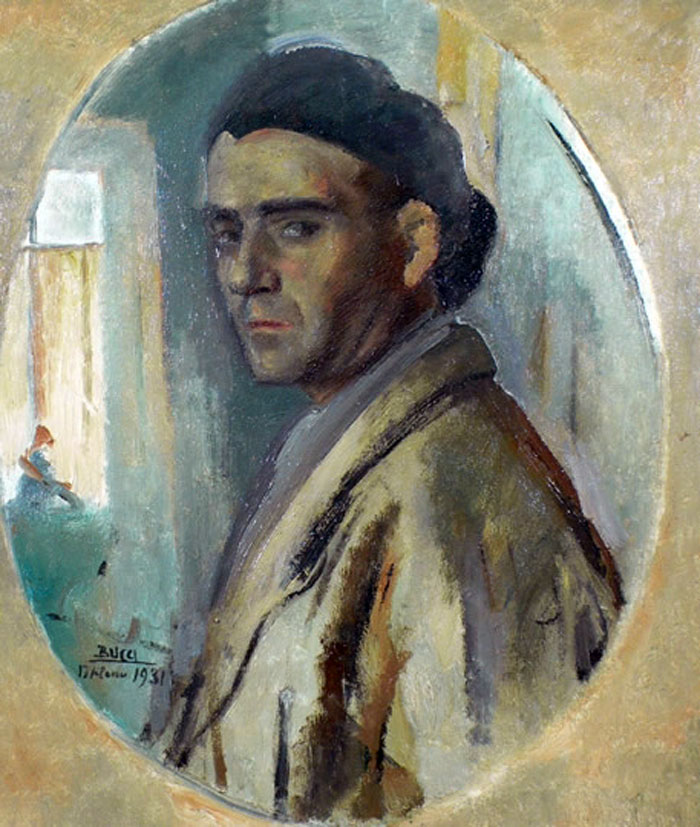
Anselmo Bucci (Fossombrone (Pesaro), 1887 – Monza (Milan), 1955) was an Italian painter.
Having attended the Brera Academy in Milan from 1904 to 1905, Bucci moved to Paris with Leonardo Dudreville in 1906. As a painter of Symbolist works with marked Fauvist overtones, he made his debut at the Salon des Art Décoratifs in 1907 and took part in the Salon des Indépendants from 1910 on. He enlisted in the Volunteer Cyclist Battalion in 1915 and his first solo show (Milan, Famiglia Artistica, 1915) took place while he was on leave. He fell in with the movement for a “return to order” in the post war period and took part in the Venice Biennale, first at the 12th Esposizione Internazionale d’Arte di Venezia in 1920 and then again in 1924, on which occasion one of his works was bought for the city’s gallery of modern art. One of the founding members of the Sette pittori del Novecento, he took part in the group’s first show in 1926 but not the second. During the 1930s, when he divided his time between Milan and Paris, Neoclassical rigidity gave way to greater freedom in his painting. It was in 1938 that he produced the fresco Italian Civilisation Putting an End to Slavery for the Palazzo di Giustizia in Milan.
